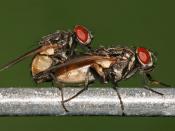Perpetrators of crimes relating to sexual behavior generally receive little tolerance from the public. Written off as evil or degenerate, these people are considered animals; driven by some inner sinister force, the perception is that they should be blotted out of society in order to protect the people (Bartol, C., 2002: 284). This paper will consider and discuss the crime of rape. After defining the crime and looking at statistics, I will explore causes and origins of the crime, and discuss some of the legal implications including an evaluation of current preventative strategies. Finally, I will make some suggestions regarding better crime prevention. Note that in Australia, we use the term Sexual assault which may include rape. Sexual assault can be located on a continuum of behaviors from sexual harassment to life-threatening rape (ABS 2004). In working within the framework of Australian publications and data, sexual assault will also cover rape in this paper.
However, where necessary (and possible), I will differentiate between the act of rape and an act of sexual assault.
Definition
Rape is sometimes difficult to define (Weiser Easteal, P., 1996: 16). Often the circumstances surrounding a rape incident are multi faceted and simply weeding through the facts and intrinsic circumstances of the situation make for a long and drawn out battle, with conviction difficult (pp 16-21). The following two definitions of sexual assault come to the fore:
The experienced-based definition
The experience-based definition is fairly broad, and suitable for areas such as support or provision of services for victims of sexual assault. Within the framework of this definition, sexual assault is unwanted behavior of a sexual nature directed towards a person, and which makes the person feel uncomfortable, distressed, frightened, or threatened, or which results in harm or injury to that person (ABS 20042). Further to...



nice
nice
0 out of 0 people found this comment useful.